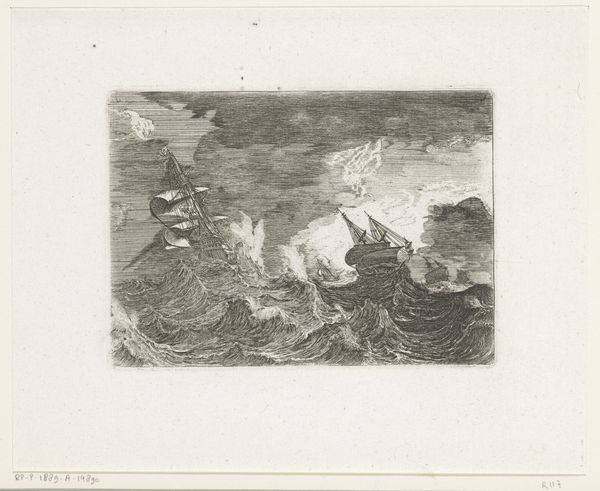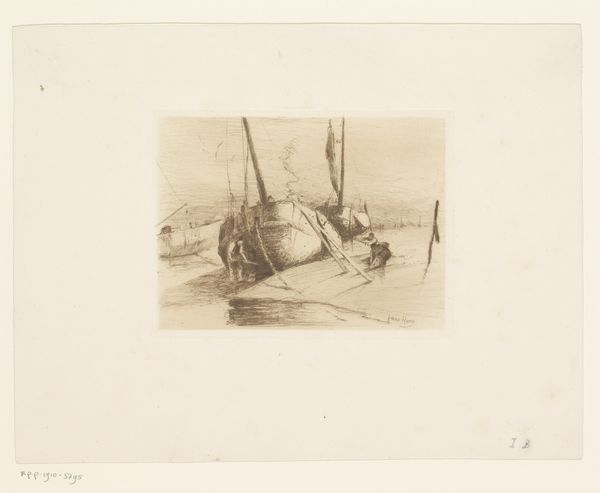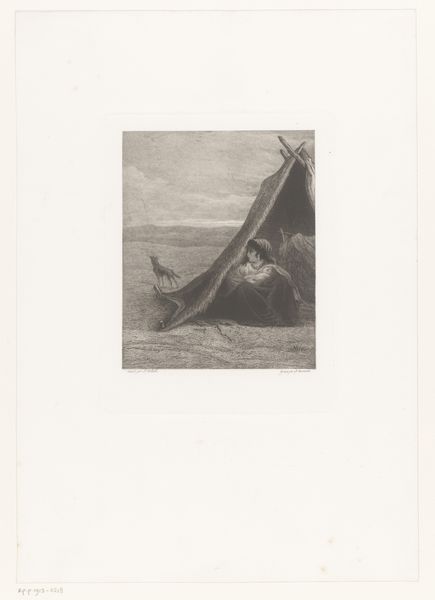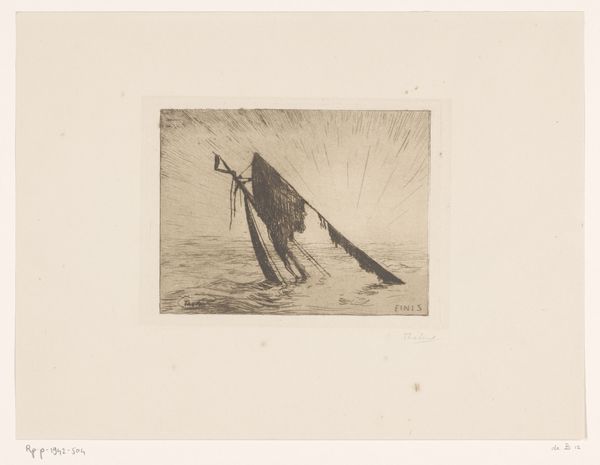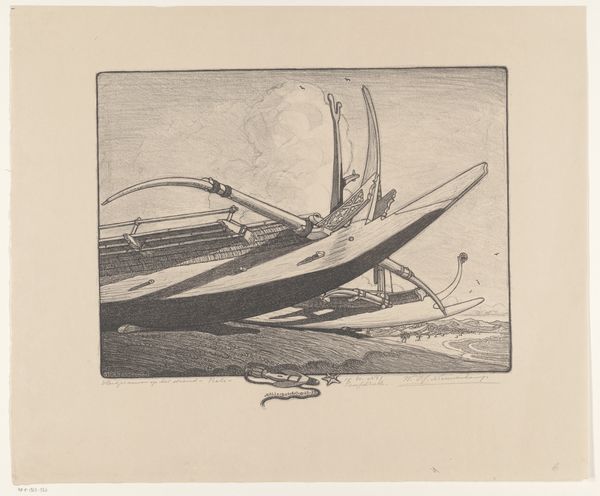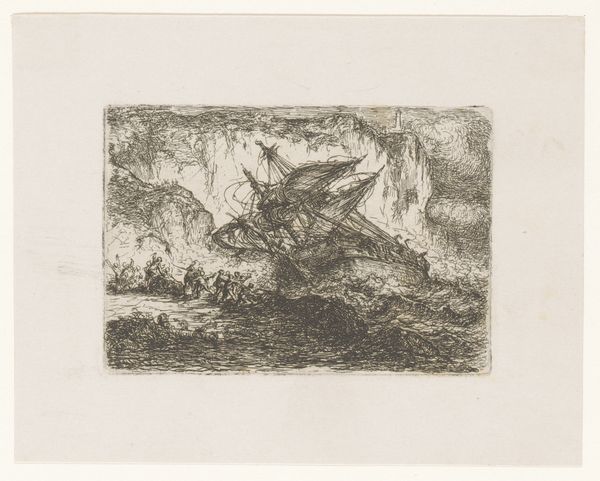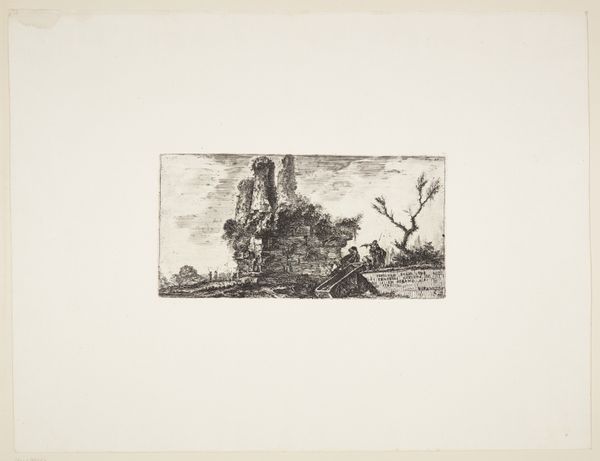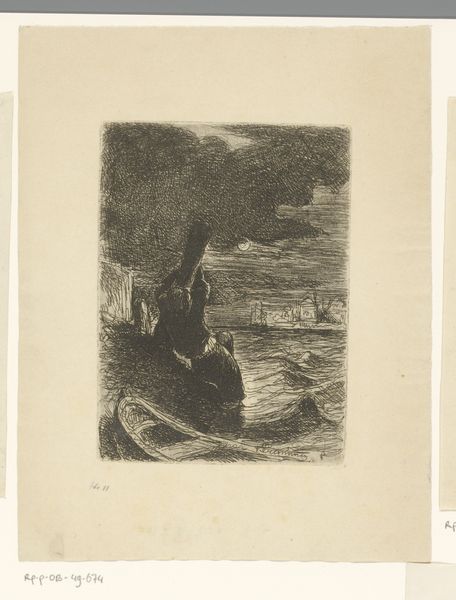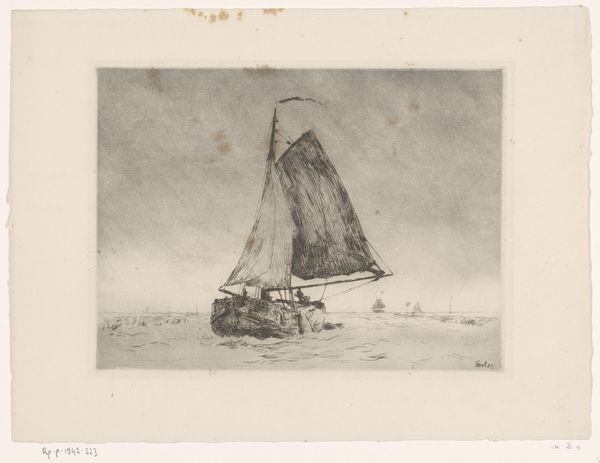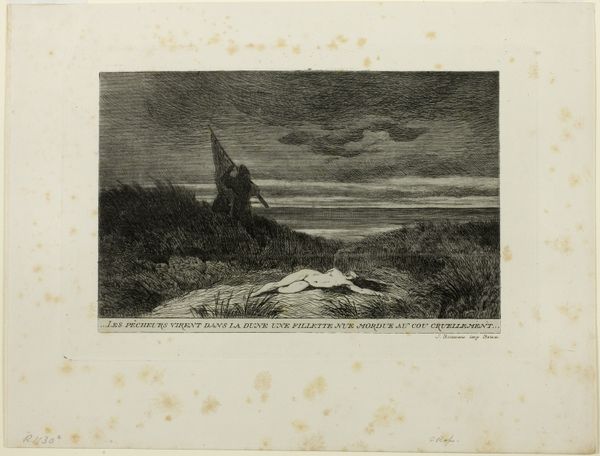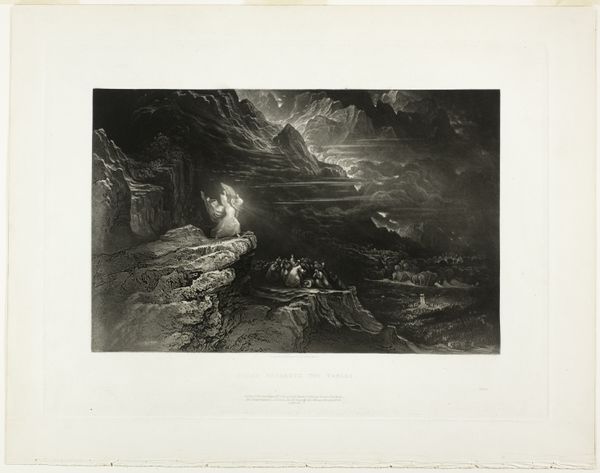
drawing, lithograph, print, paper, ink
#
drawing
#
narrative-art
#
lithograph
# print
#
landscape
#
paper
#
ink
#
romanticism
#
watercolor
#
realism
Dimensions: 217 × 280 mm (primary support); 250 × 300 mm (plate); 288 × 380 mm (secondary support)
Copyright: Public Domain
Curator: Before us we have Eugène Isabey’s "Fishing Boat in a Gale," a lithograph—that is, a print made using a stone matrix—of uncertain date held at The Art Institute of Chicago. Editor: Turbulent. That's the first word that springs to mind. The scene is overwhelmingly dominated by the rough sea and ominous sky, rendering the boat and its occupants incredibly vulnerable. Curator: Precisely. Isabey employs very active, agitated lines to communicate not only the storm's visual appearance but also, I think, its emotional intensity and psychological impact. Editor: It reads to me like a classic portrayal of humans pitted against a much more powerful, indifferent Nature. Those boats symbolize the precarity of life, especially for marginalized communities reliant on such treacherous work. Curator: I see a symbolic rendering of faith and doubt in tension here, mirrored in the boats’ navigation through darkness, suggestive of emotional and spiritual trials. These ships carry souls as well as commerce; they link physical survival to something greater. Editor: Absolutely. Romanticism often romanticizes struggle but often overlooks the concrete economic conditions underpinning these coastal communities, this representation leans into those erasures. I see those issues reflected in the somber and gritty monochromatic lithographic depiction here. Curator: Notice how the composition directs our gaze through the tumult to find resilience in the form of these men striving against the gale—suggesting courage, the possibility of survival, but also the cost of that survival in such unrelenting conditions. It certainly encapsulates a very specific view of man and nature. Editor: This image, therefore, can prompt necessary conversations about working conditions and social vulnerability; we’re invited to challenge our inherited ideals about sacrifice, community resilience, and self determination in the face of structural injustice. Curator: Reflecting on the piece now, I note its lasting power; it resonates because Isabey tapped into something timeless—the deeply human challenge of persevering in the face of overwhelmingly threatening natural forces. Editor: Ultimately, what resonates most for me is not the picturesque scene, but its subtle provocation – it implicitly challenges our roles in sustaining systems that repeatedly position people in perilous positions.
Comments
No comments
Be the first to comment and join the conversation on the ultimate creative platform.
